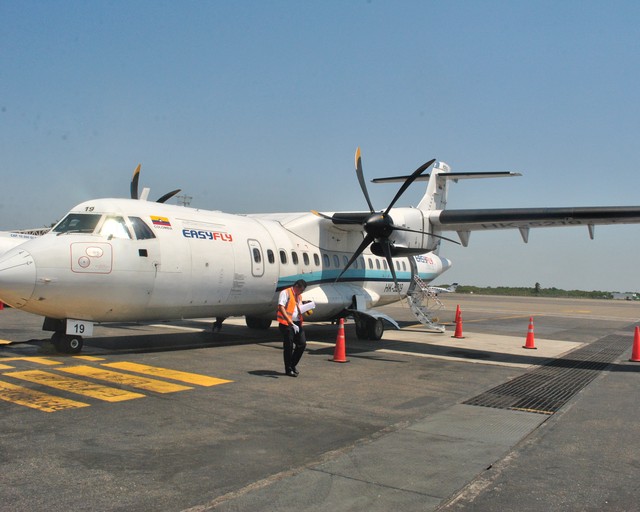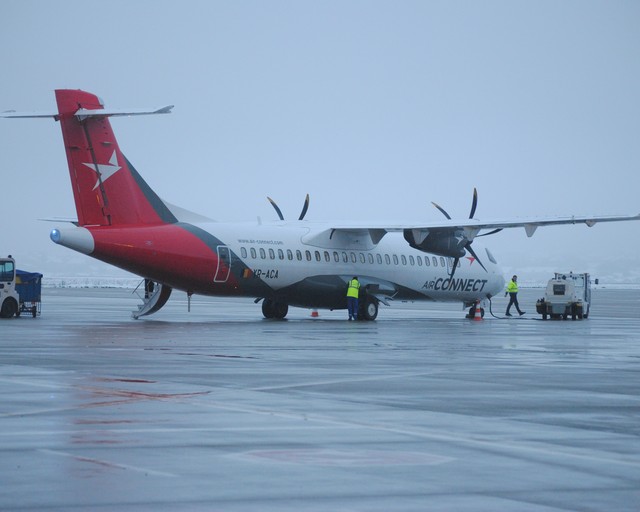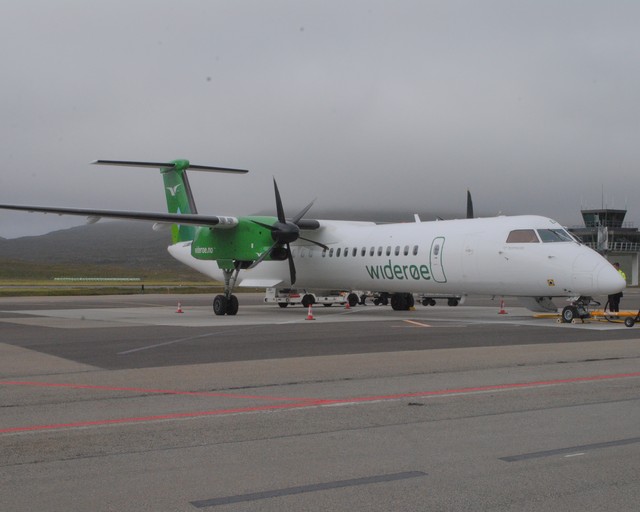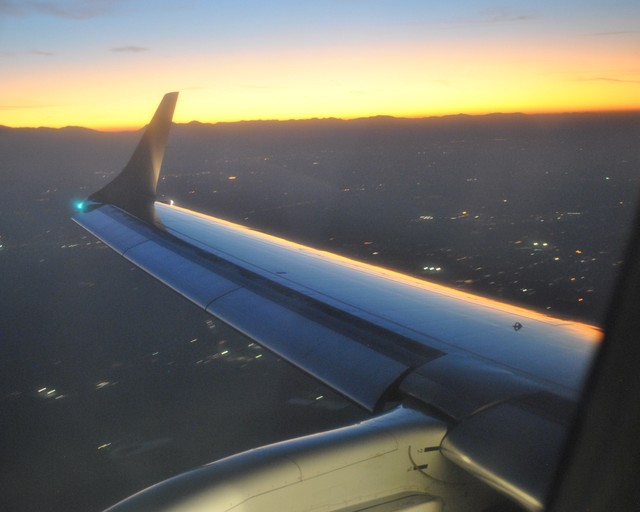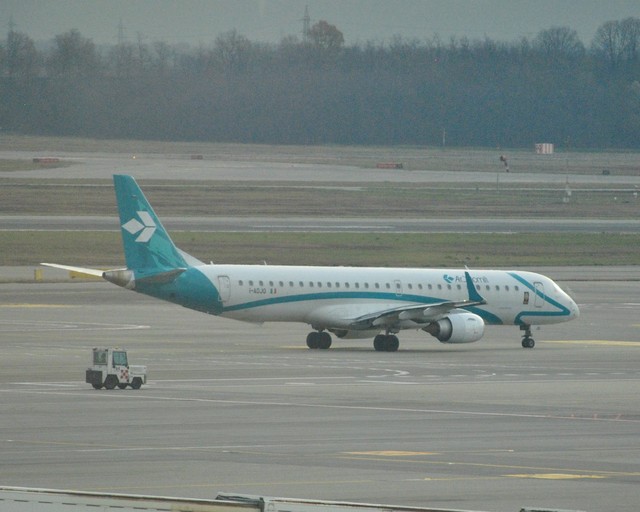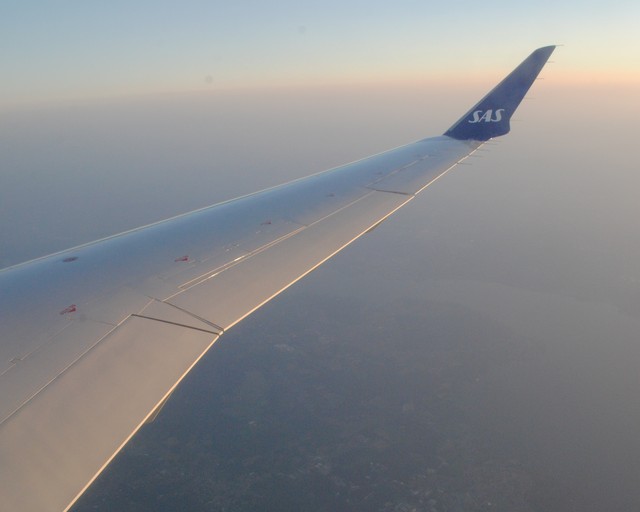Hi, dear flight-report members and readers!
In this short FR I'd like to present a detailed review of Porter Embraer E2-195 on a mid-haul flight from Calgary (YYC) to Ottawa (YOW), taken on 29 September 2024.
Intro
I have big sympathy to Embraer - the only planemaker in Latin America (and have big respect to Brazil for being able to sustain its own aviation industry) and to their model line. Their E-jets are one of the most comfortable jets in passenger service with 2-2 layout and usually generous seatwidth (18"). Only A220s surpass Embraers in lateral space per pax with their wider and taller cabin and wider seats, despite a bit more crowded 2-3 layout.
With the same row pitch (which is by the most part is the airline's prerogative) E-jets have significantly more lateral space per pax than, for example, 3-3-3 Dreamliners, 3-4-3 B747s or 3-4-3 B777s. This is one of the paradoxes of the modern civil aviation, when in economy some small narrowbodies can be much more comfortable than some most popular widebodies. This could be explained easily: two aisles and generally high exit limit capacity of widebodies provoke airlines to densify cabins laterally to increase CASM, whereas small narrowbodies are limited by single aisle and exit doors capacity - that's why you'll never see Embraers with 2-3 layout or A220s with 3-3 layout. In the premium cabins the situation is the opposite, because the larger is cabin width - the better for premium hard products. So, smaller narrowbodies are definitely a blessing for economy passengers, but not for premium passengers.
E2 is the newest, very fuel efficient 2nd generation of E-jets, powered by large PW GTF engines (which, unfortunately, have flawed reputation due to unstable reliability and there is no another engine option) and having raked wingtips instead of winglets. Until recently E2 family was not especially popular, but things change and E2 begins to gain popularity it truly deserves.
Porter, a Canadian short- to mid-haul airline, is kind of unique for North America, being able to sustain a sizable fleet of E295s. For example, no US operate E2 jets, and the biggest regional jet there is E175 due to local specifics of pilots union contracts in regional airlines (so-called "scope clauses"), limiting capacity to 76 seats and MTOW to 86K lbs. Thus, the only E-jet in production which comply these scope clauses is E175 and that's the reason it's still produced despite being the older 1st generation. The larger E-jets could be operated in US only by mainline airlines under their legacy brands, but the US giants have shown no interest (for example, Delta chose to operate A220-100s and A220-300s as its smallest narrowbodies, whereas the smaller narrowbodies of United are B737-700s and of American are B737-800s).
In Canada there are no such limitations for regional airlines, that's why Porter has succeeded with E295 fleet. Before I flew quite a lot E-jet flights with different airlines, but all these flights were shorthaul with the duration 2 hours at max. It was very interesting to fly the largest new-gen Embrarer on a twice longer flight. Due to vast size of Canada it eventually became possible.
Embraer E2-195 Operators
It would be useful to list all the current E295 operators, their layout (as this is quite small regional jet, usually the layout is all-economy) and numbers of grounded (presumable due to PW engines problems) units.
1) Air Peace: 5 units (C12_Y112), 4 units are grounded.
2) Azul Brazilian Airlines: 36 units (Y136), 5 units are grounded.
3) Binter: 16 units (Y132), 1 unit is grounded.
4) Helvetic Airways: 4 units (Y134).
5) KLM Cityhopper: 25 units (CY132), 6 units are grounded.
6) LOT Polish Airlines: 3 units (CY136).
7) Mexicana de Aviacion: 3 units (Y132).
8) Porter Airlines: 48 units (Y132). 2 units are grounded.
9) Royal Jordanian: 4 units (C12_Y110).
10) TUI fly Belgium: 3 units (Y136).
Calgary International Airport (YYC)
YYC is a prominent hub of the Canadian West. It's located north of the city centre and is well-connected to the city by bus service. The single terminal (formally divided between international and domestic operation, but with no physical divide, because there's no exit border control in Canada, as well in US, UK, Ireland, Australia, NZ and Mexico) is dated, but quite spacious with a lot of facilities and good planespotting possibilites.
In 2024 Canadian LCCs introduced a strict policy for the lowest fares: one has to visit the check-in desk in the airport and fit his hand luggage into calibrator before obtaining boarding pass. Obviously, it was done to reduce hassle at the gate, but for passengers, travelling light, it's an extra waste of time. In 2023, when I was first time in Canada and flew domestically on Flair and Lynx (now-gone), there were electronic BP at online check-in and hand luggage could be checked at the gate.
The Aircraft
My flight from Calgary to Ottawa was operated by 2023-built C-GZQF in Y132 layout.
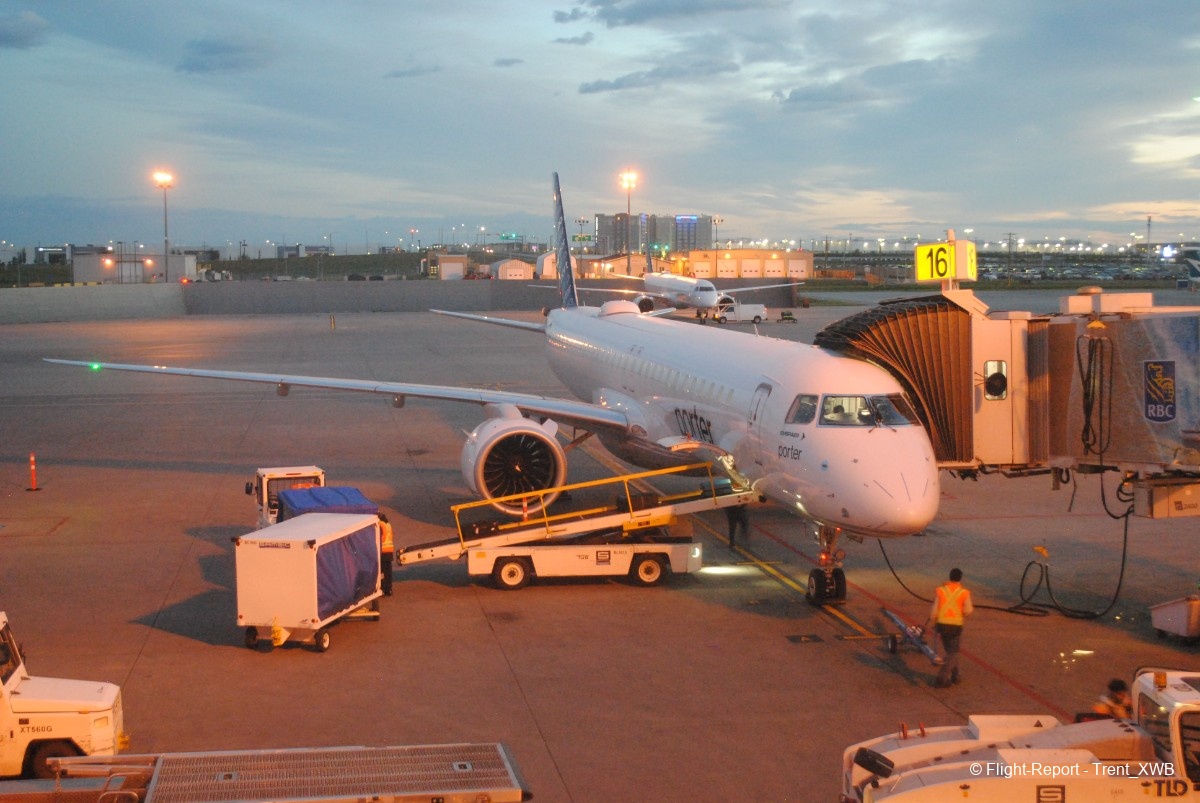
The Cabin
The cabin has 132 seats in standard 2-2 layout. The first 4 rows, having blue upholstery, are "preferred seats" with large pitch (36") which could be chosen for additional cost. The next 3 rows also have increased pitch (34"), whereas the regular rows have standard 30" pitch.
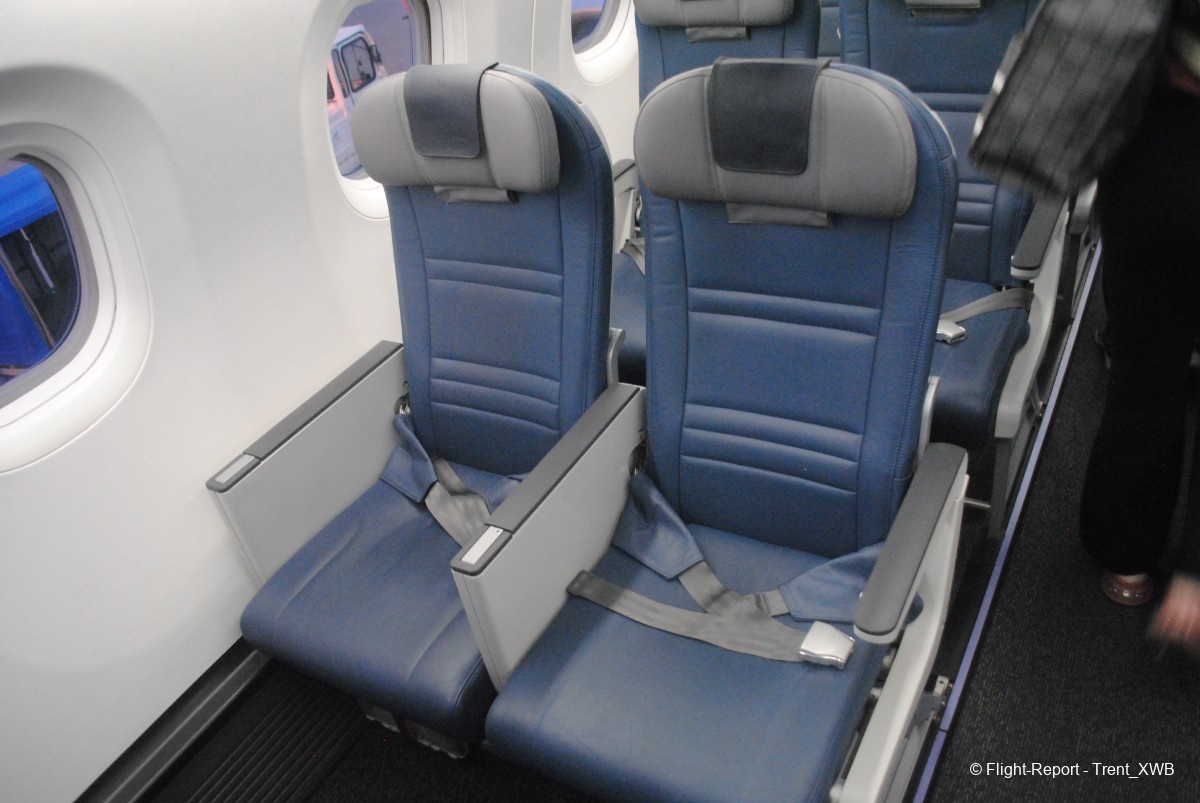
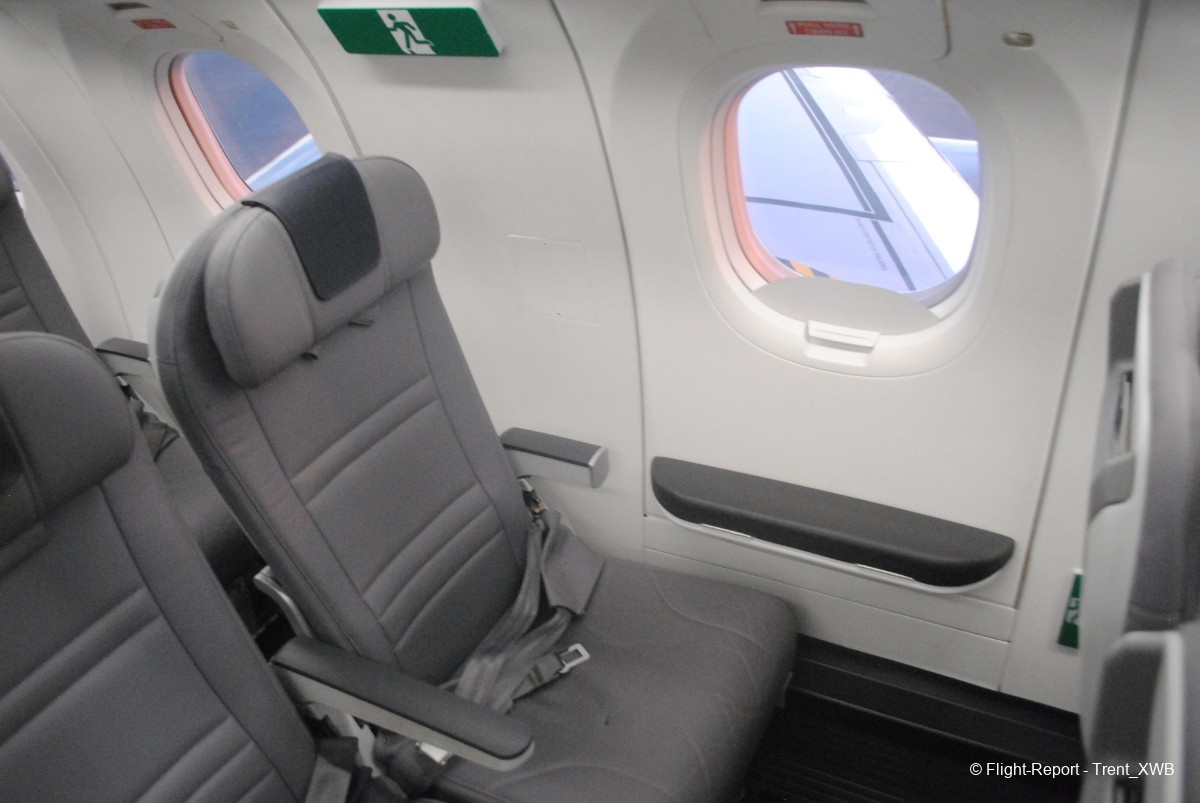
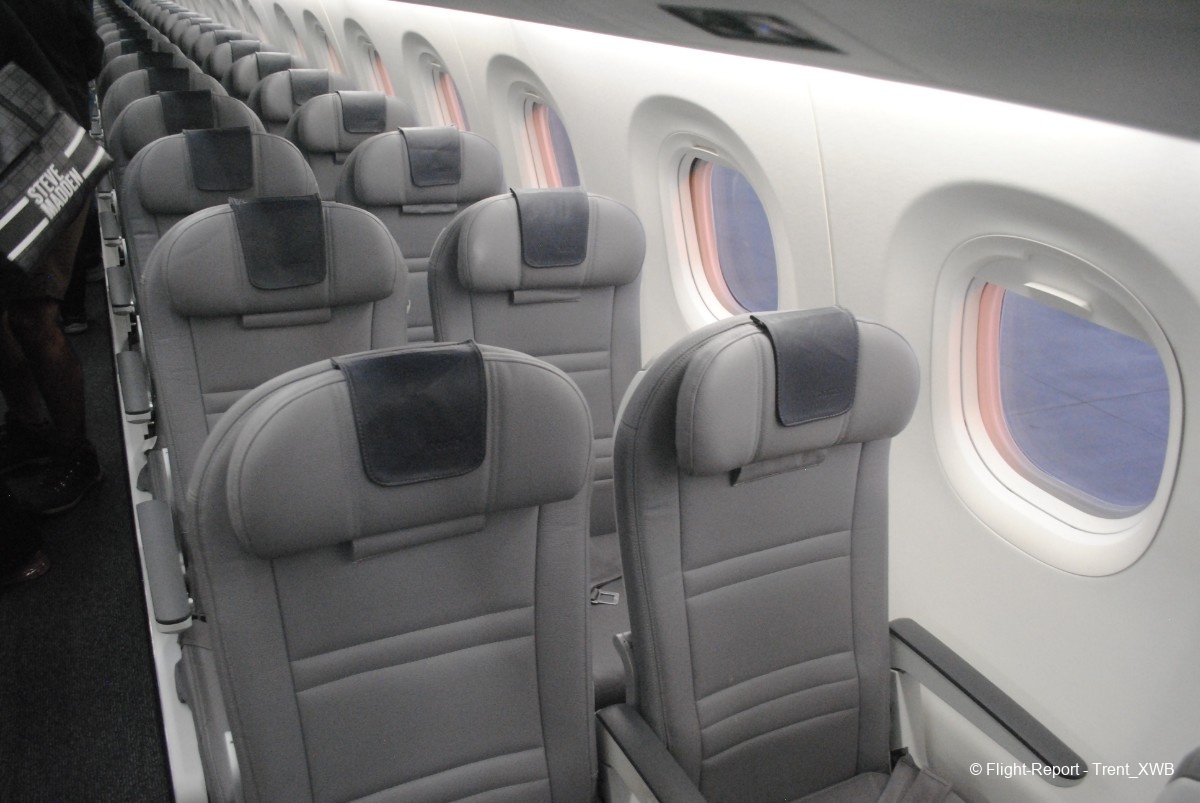
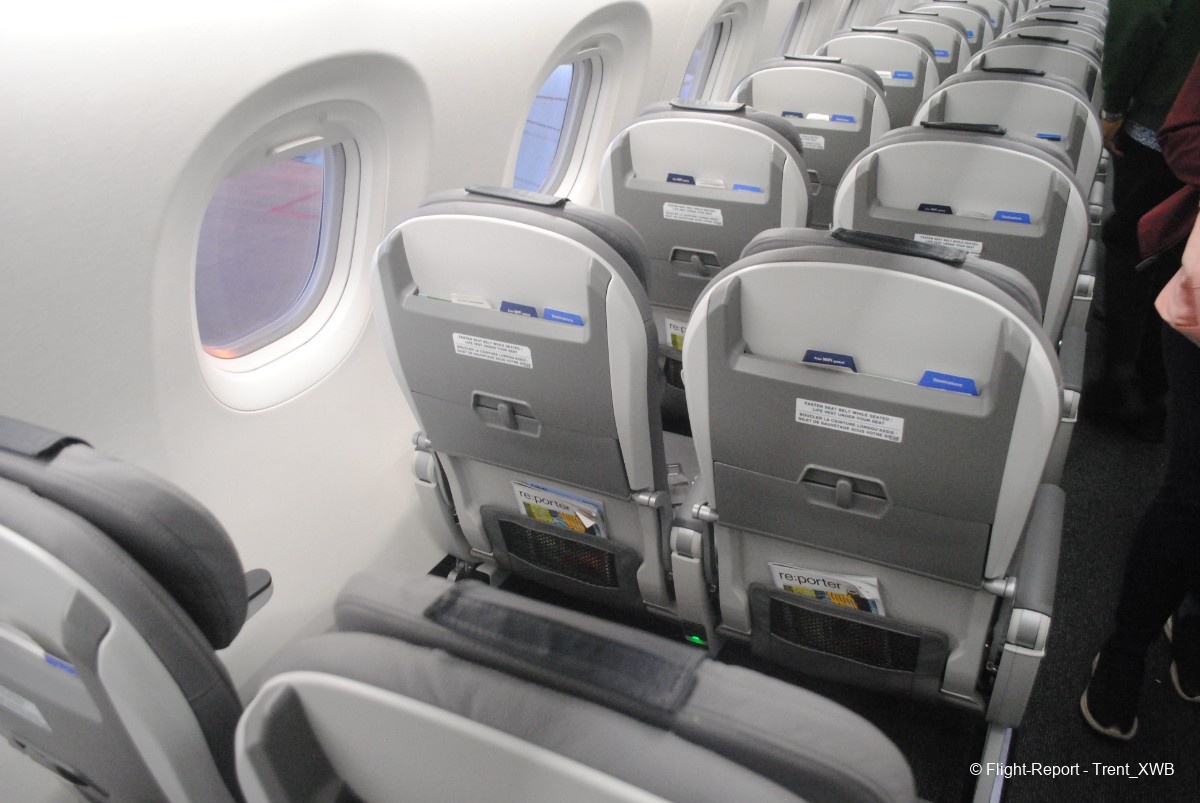
The Economy Seat
My seat is 32A in the penultimate row. It was assigned randomly at online check-in (as was said earlier, now online check-in doesn't result in electronic BP for lowest fares and you have to visit the airport check-in desk). The seat is spacious (18.0" width) and comfortable. It has leather upholstery, adjustable headrest (a relative rarity in regular economy in Embraers!), hard seat pocket, bi-fold tray table and underseat universal power socket for every seat, which is nice considering the flight duration. The row pitch is OK for me (177 cm height), but may feel a bit tight for taller persons. Anyway, it's much better than the abysmal row pitch in Edelweiss A343!
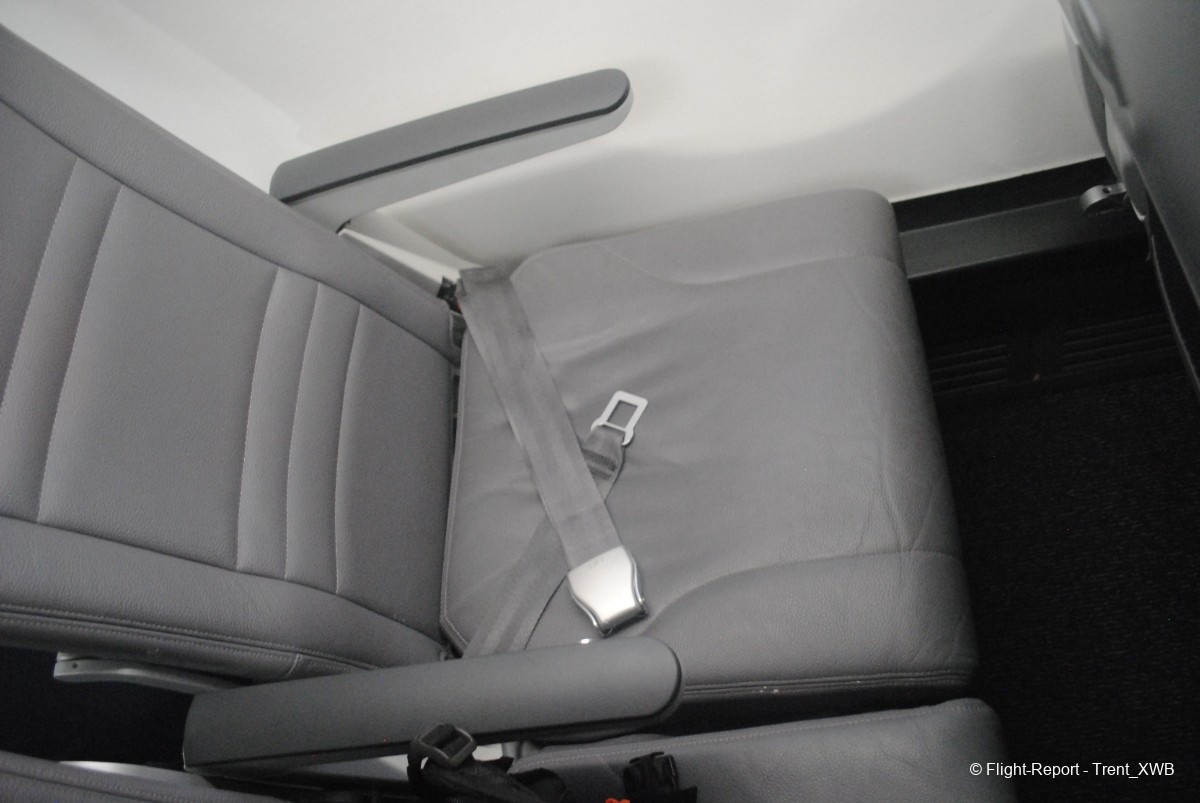
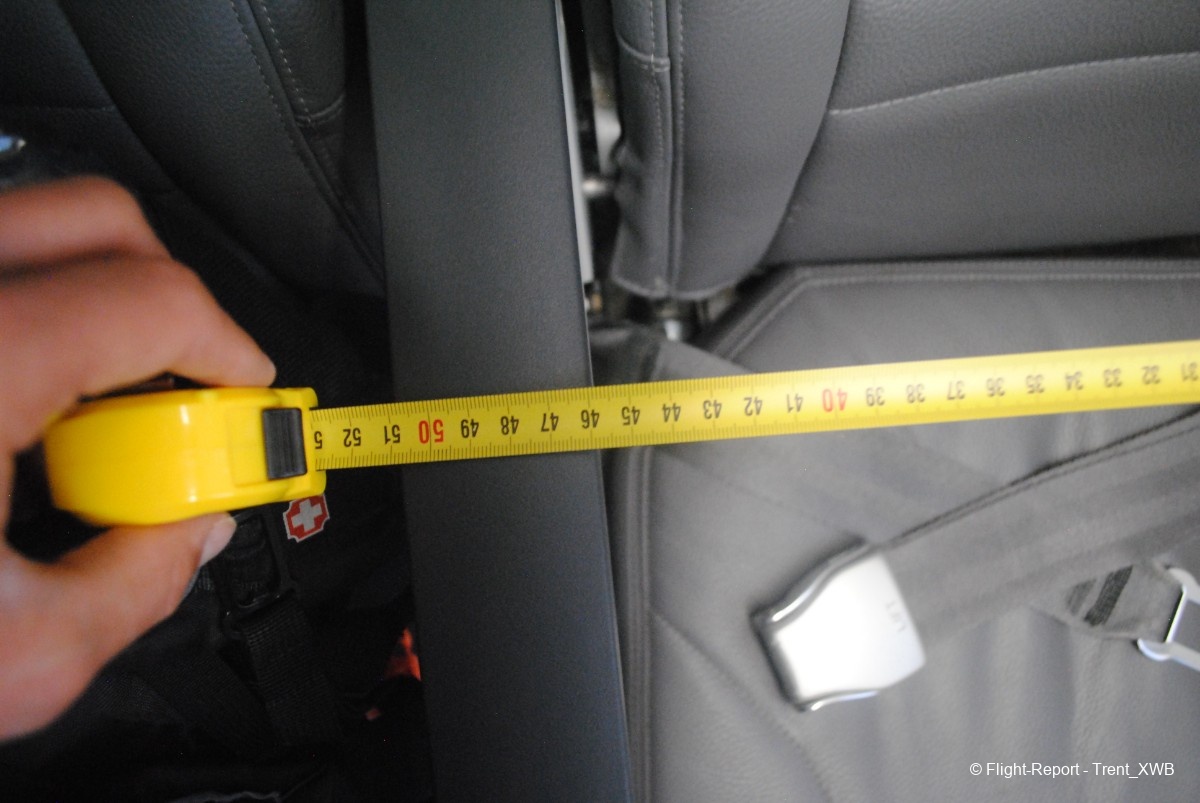
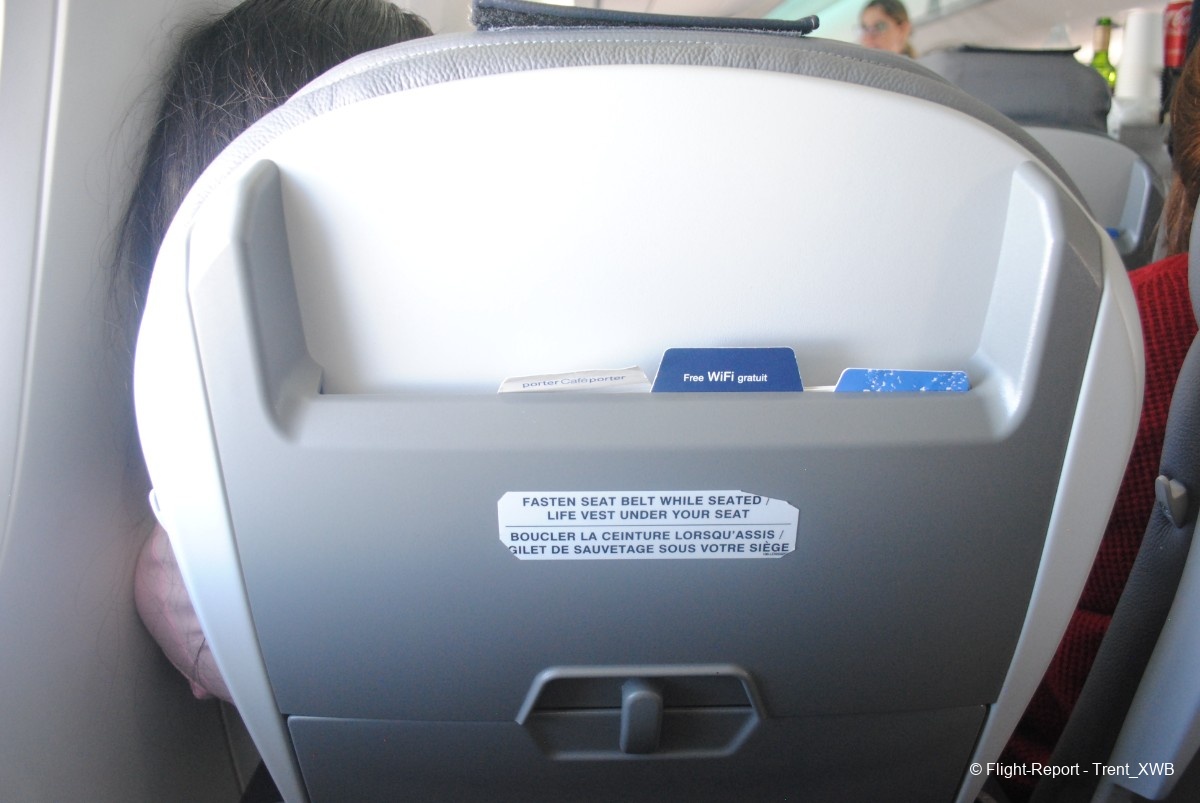
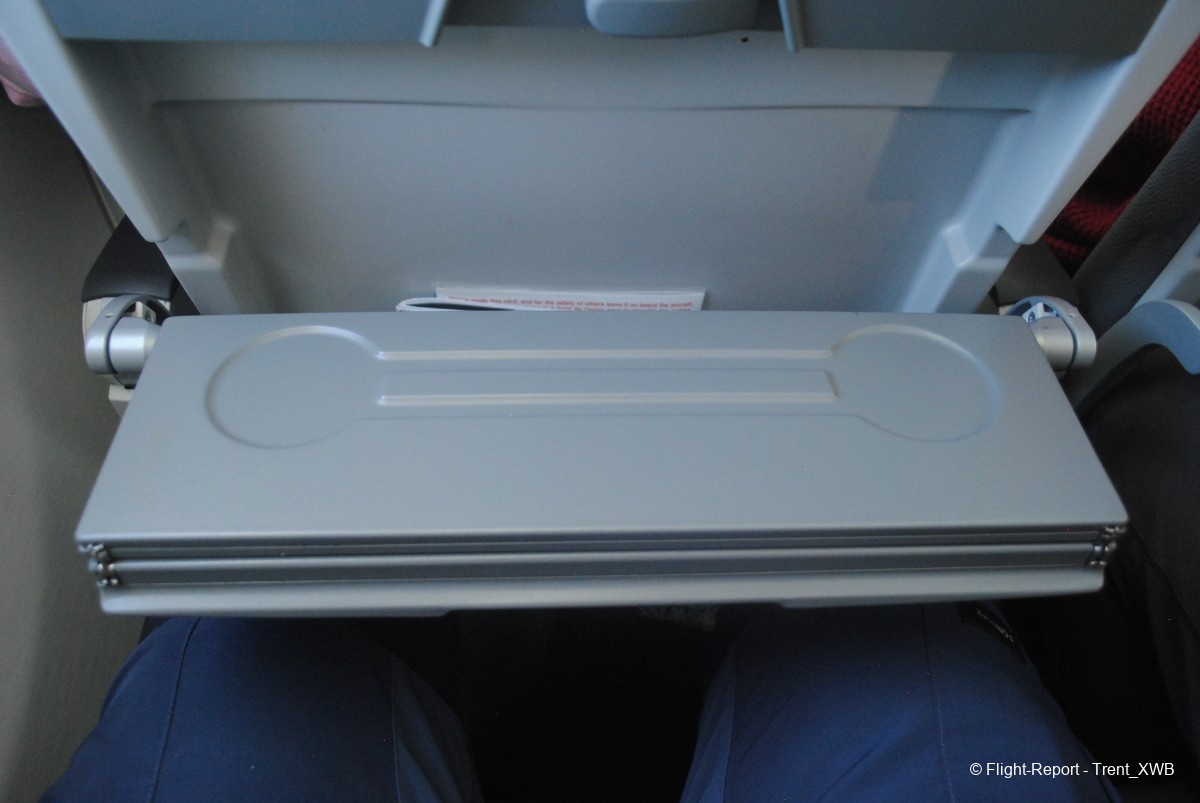
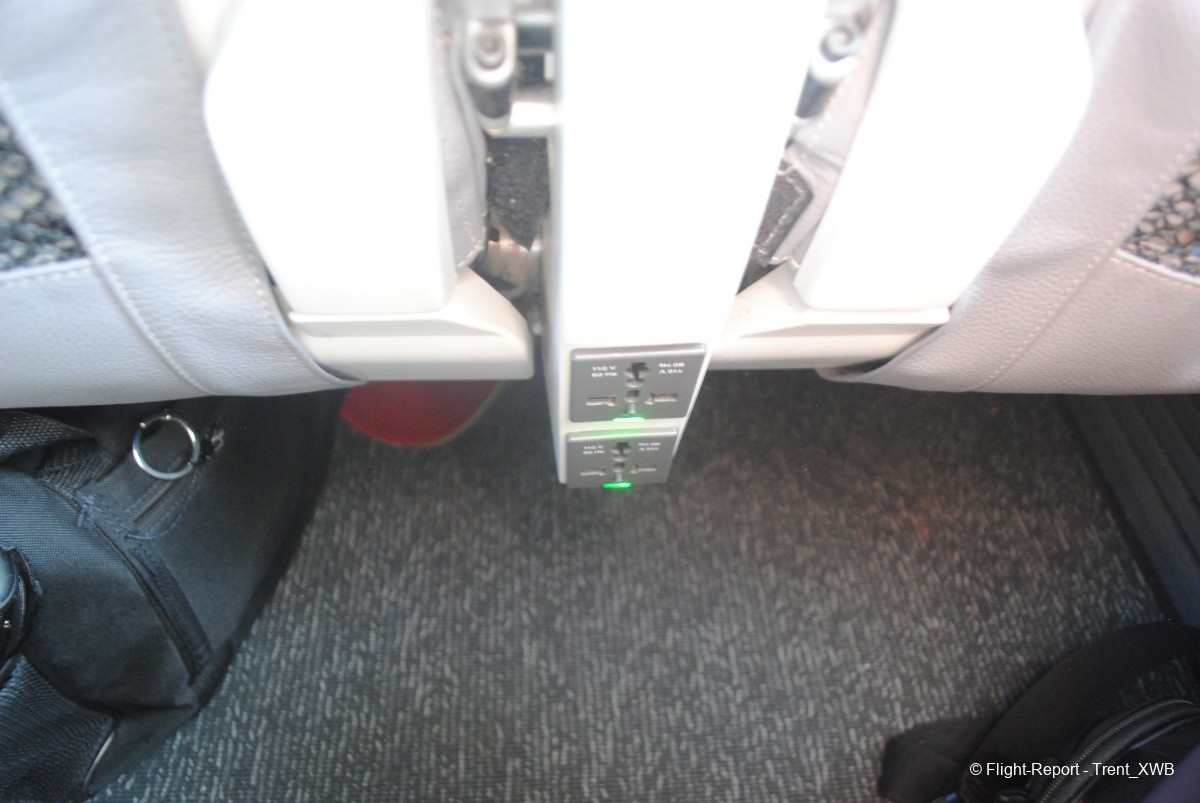
The simple overhead panel with personal airvents is typical for E2-jets.
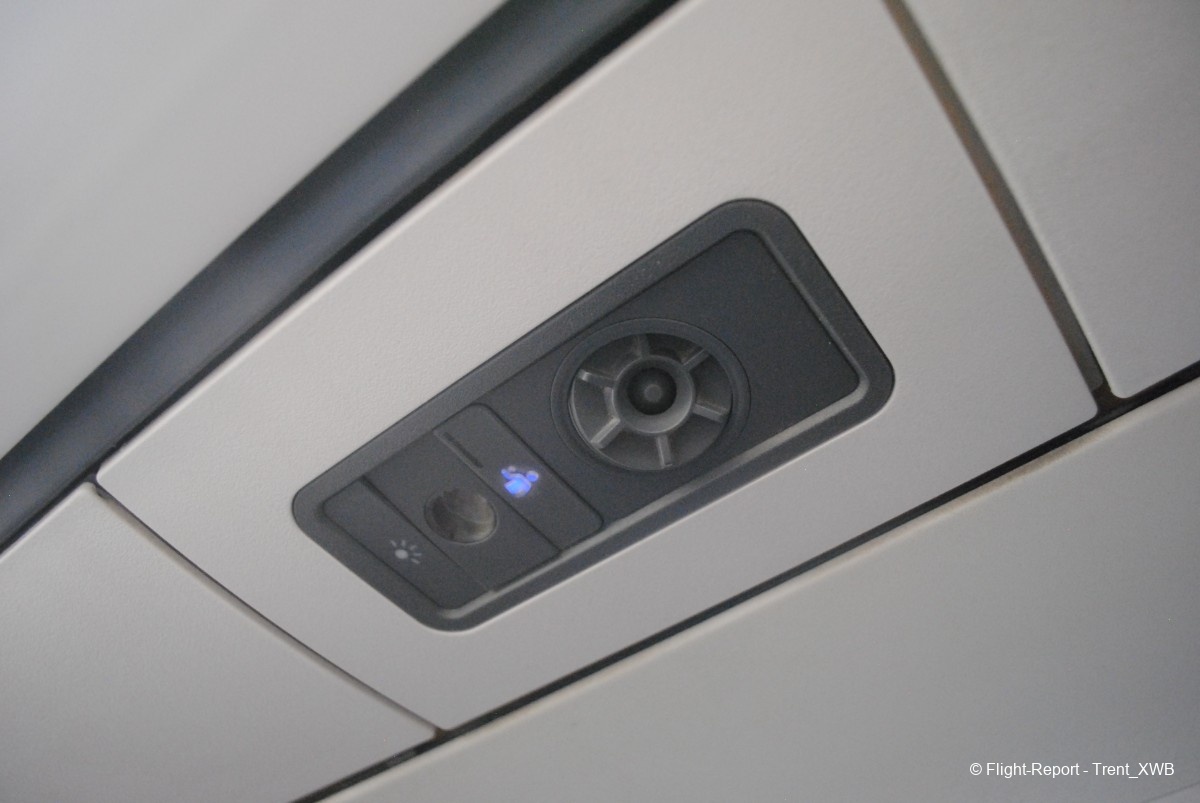
The E2 cabin interior is quite stylish.
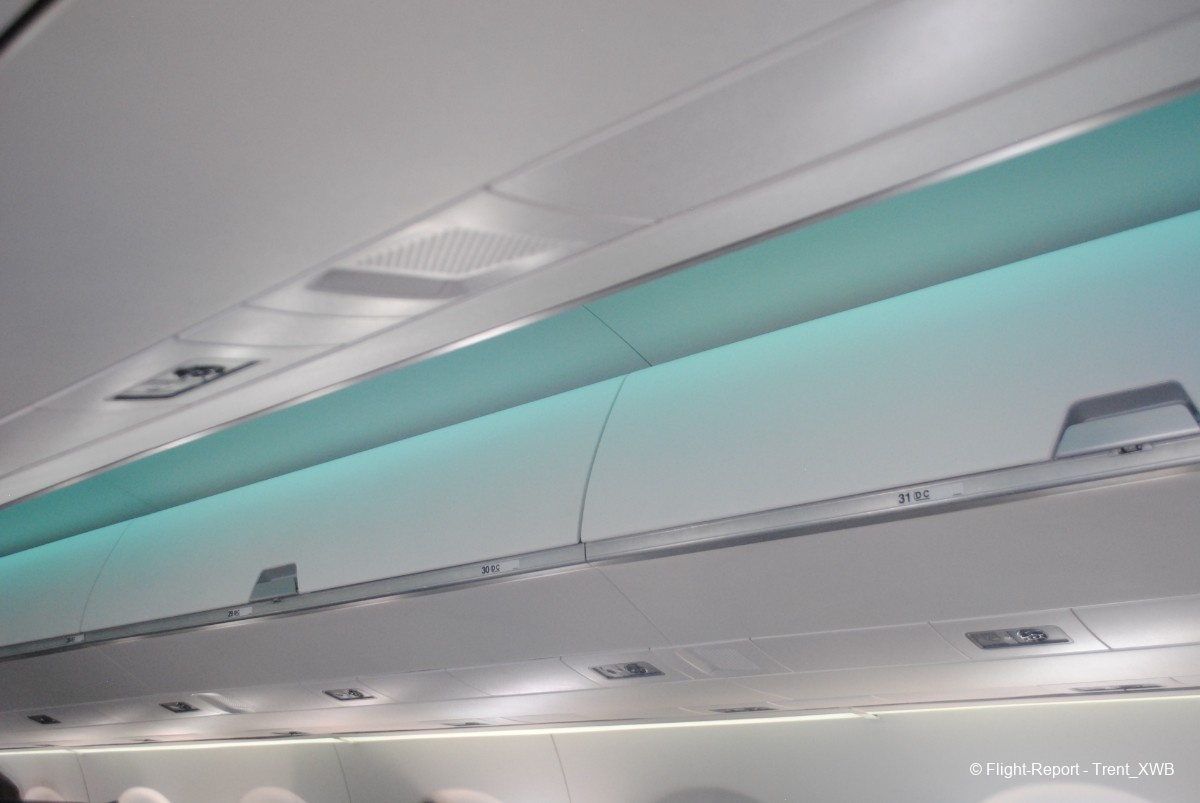
The Flight
The pushback began on time, but then suddenly the Captain came on PA and told that some problems with electronics occured and the technicians are called to resolve. The aircraft was parked at an remote stand and it took almost 1.5 hours to resolve the problem. During waiting time I used the free 1-hour pack of onboard WiFi, which is nice PD's feature. Eventually everything became OK and we departed YYC.
There were 2 snack services during the flight. The first round of service included wine in the glass! The crew were friendly, which seems to be a norm for all the Canadian carriers (I've also flown Air Canada, Flair and now-gone Lynx).
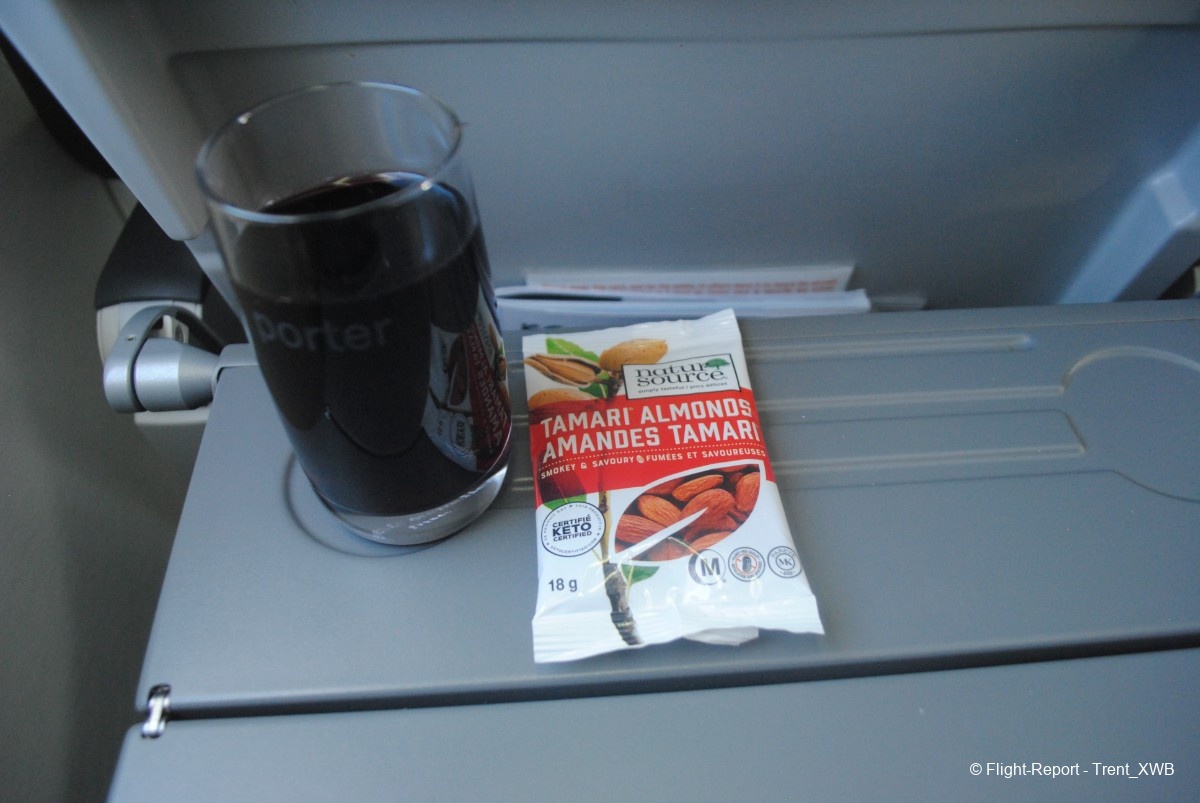
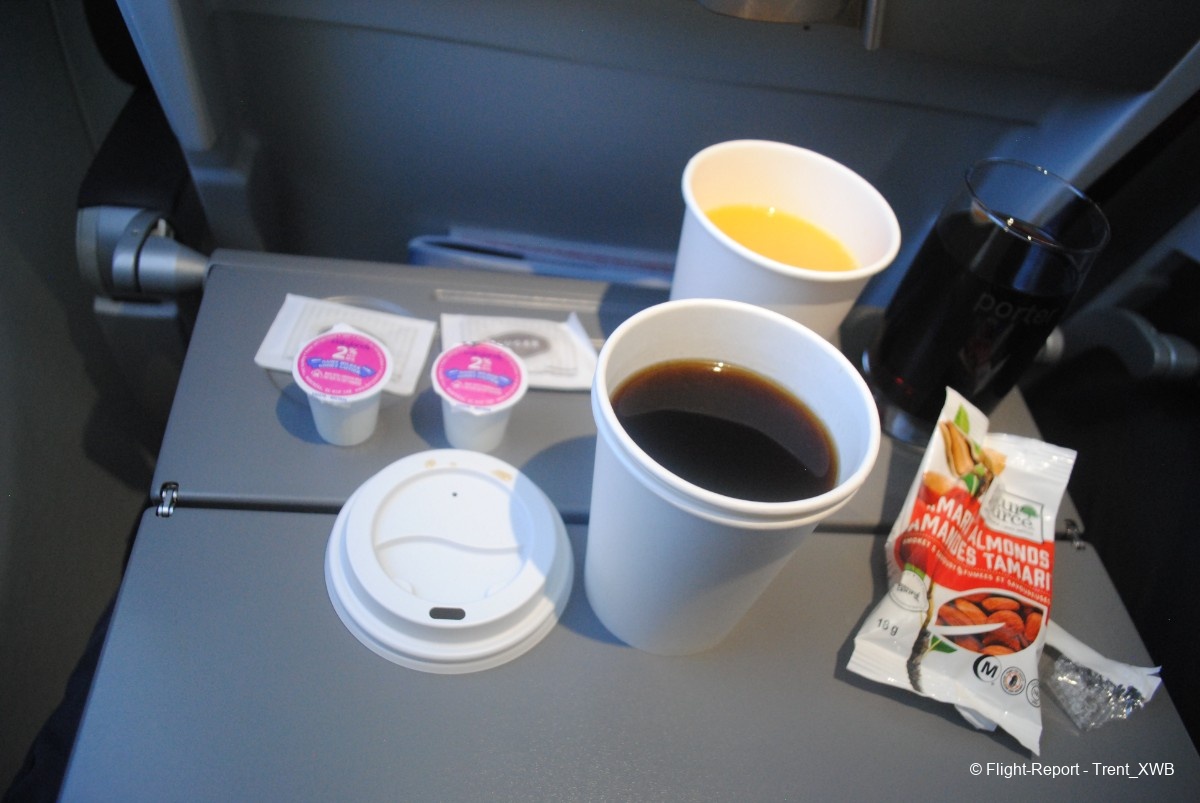
The 2nd service:
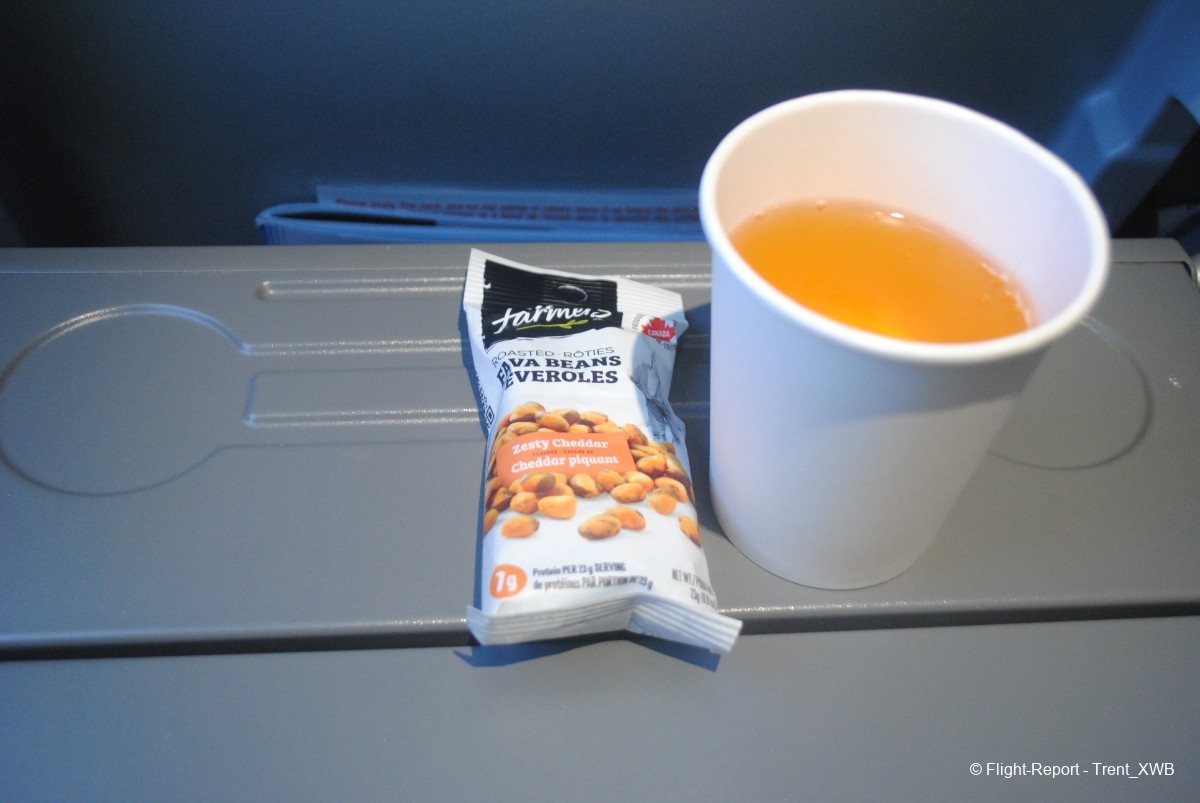
A view of the cabin with green inflight lighting.
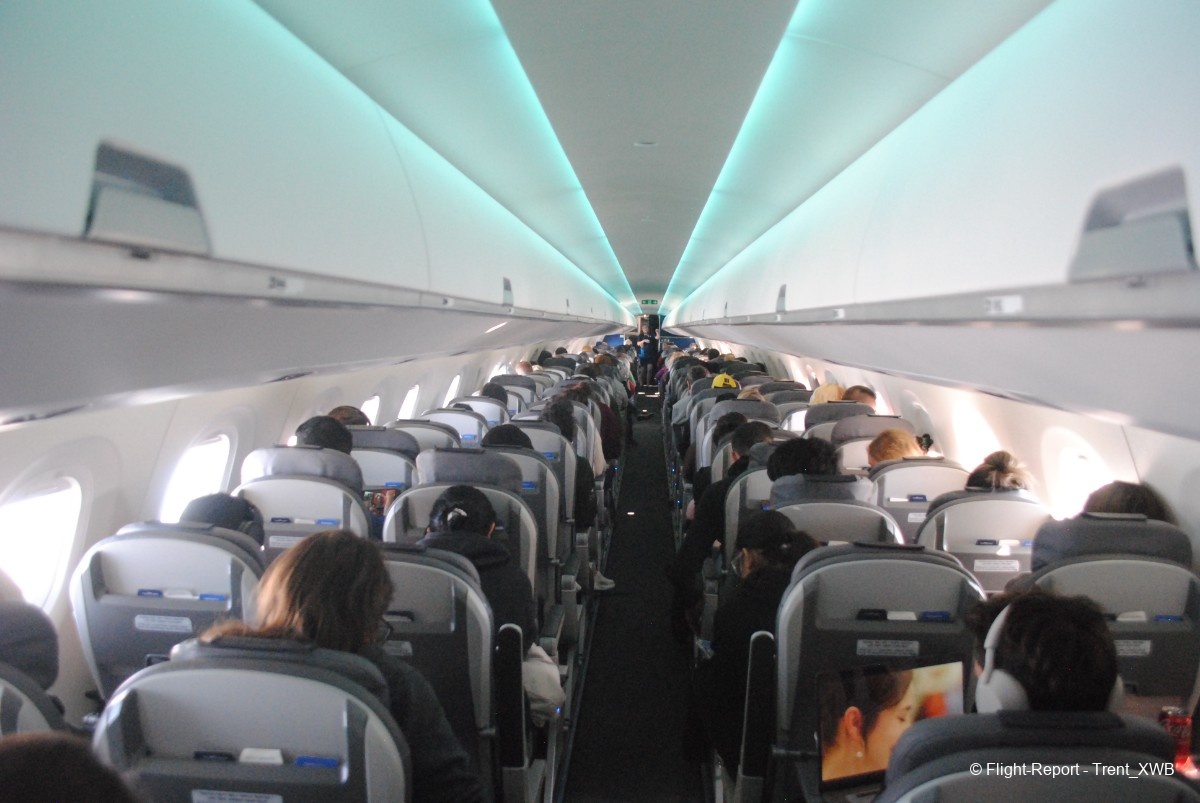
The lavatory is modern and clean.
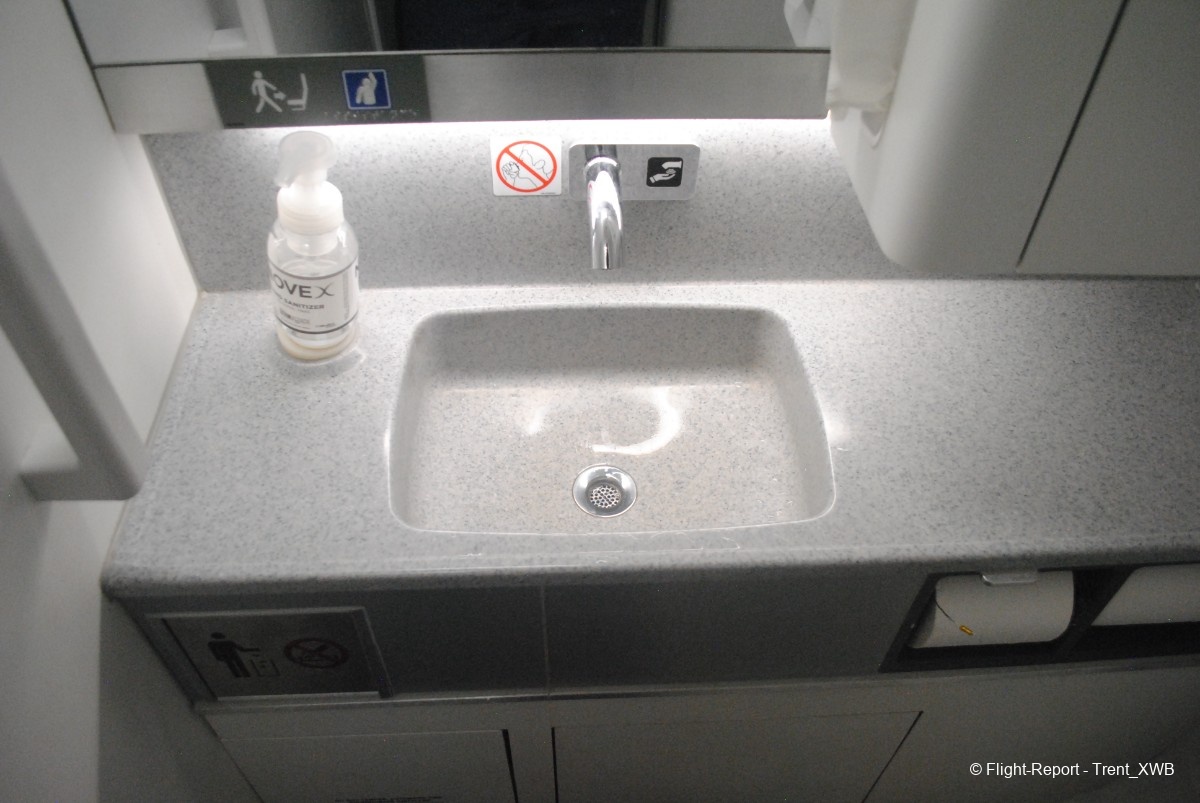
The cabin control display.
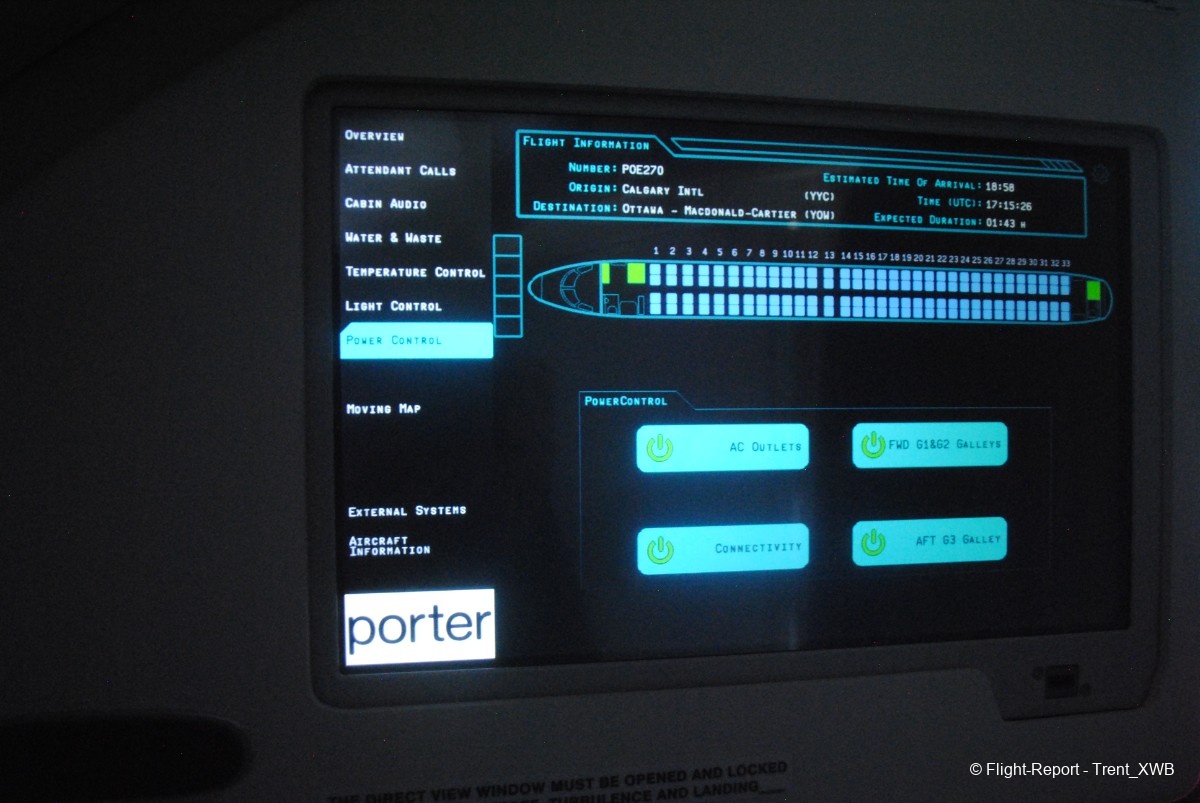
Some views of sunlit numerous lakes enroute.
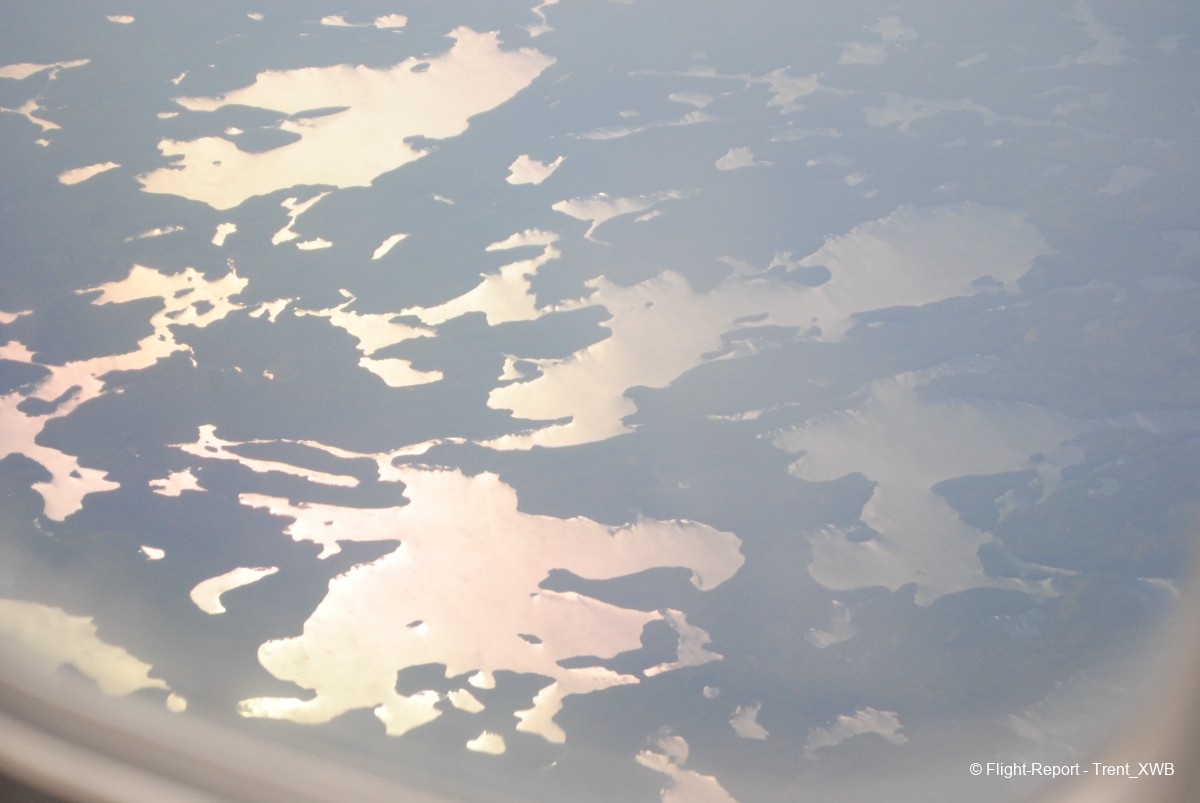

E295 wing over Canadian plains.
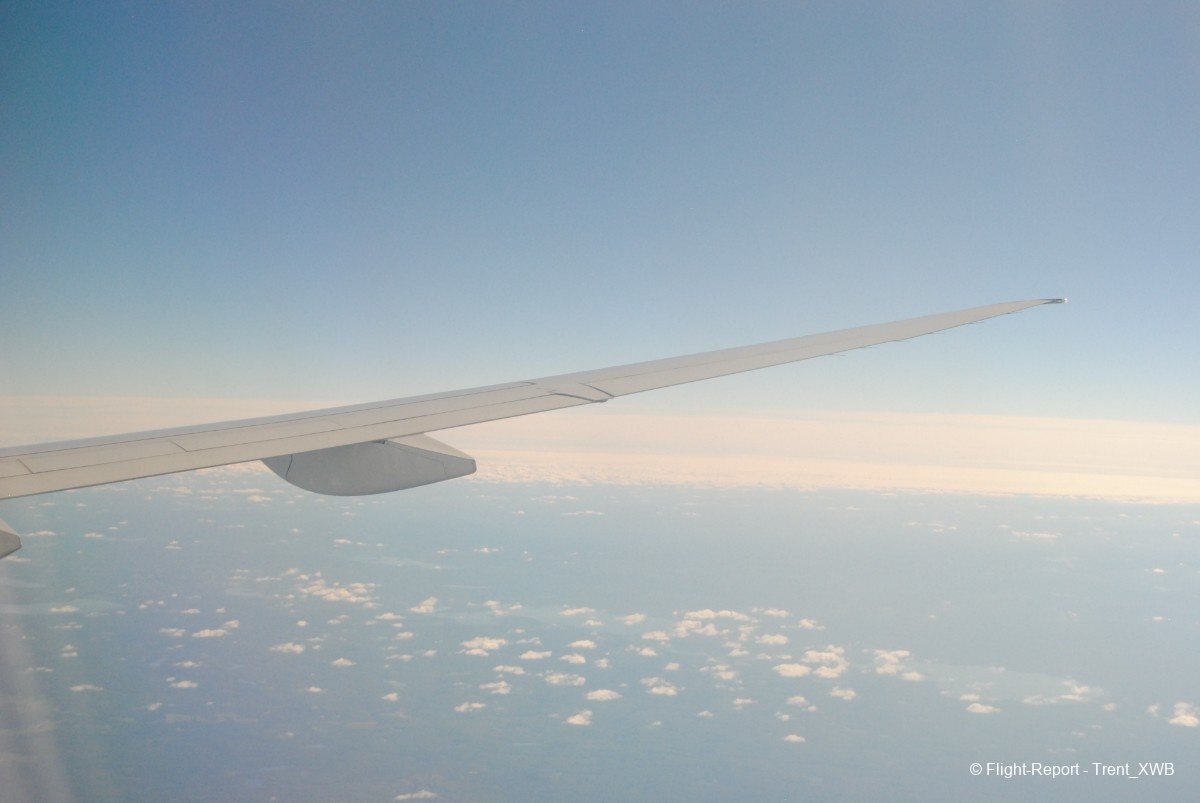
The Cabin After The Flight
Some views of the cabin upon disembarkment.
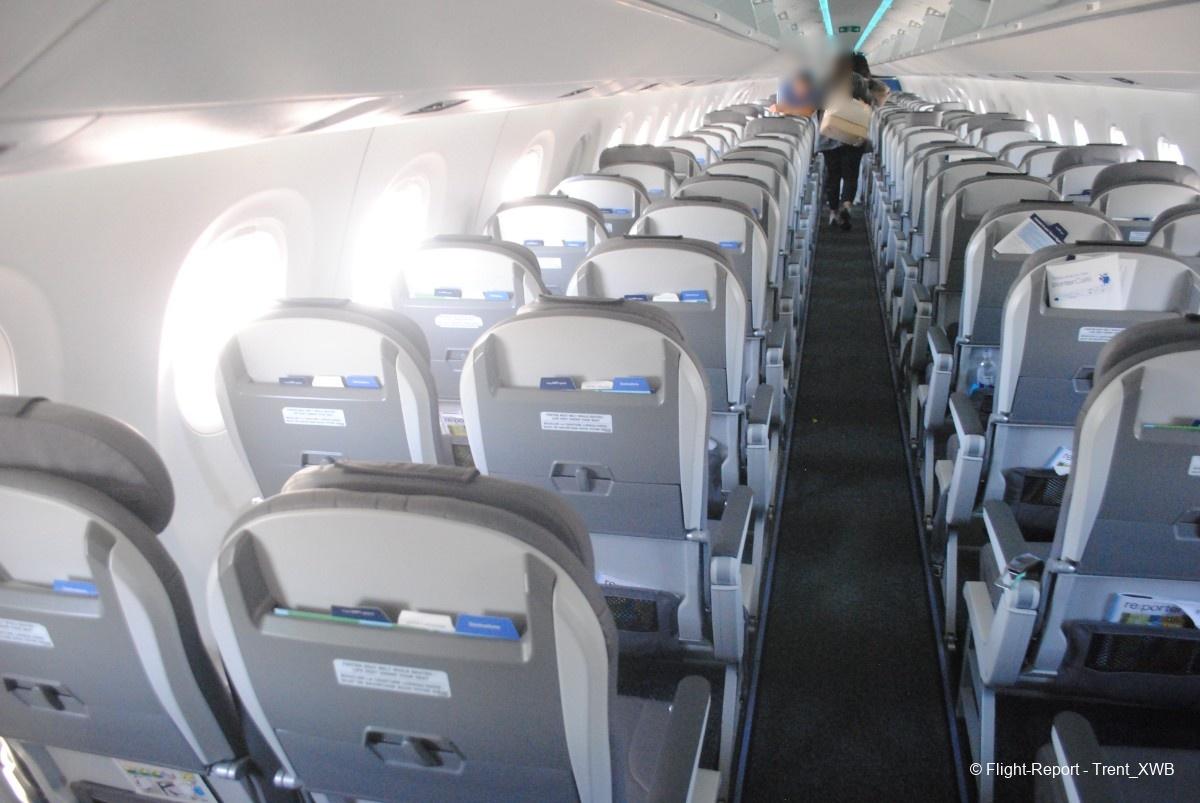
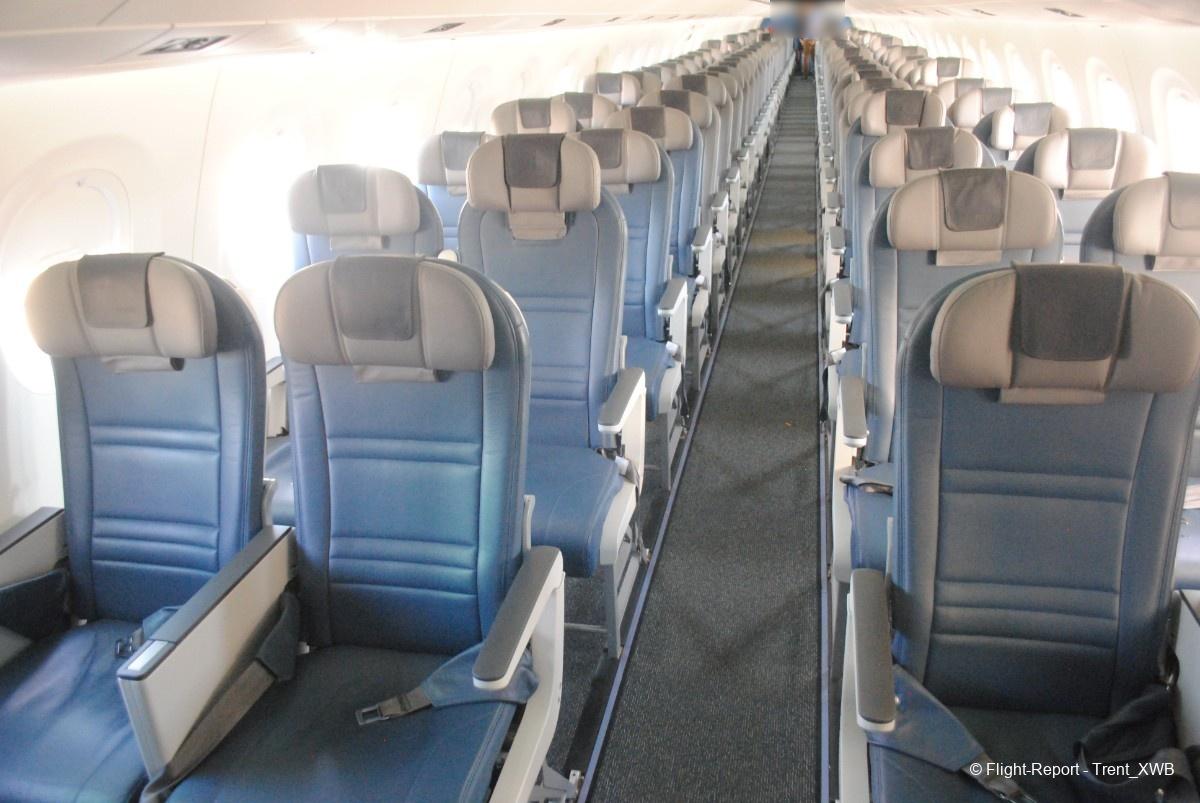
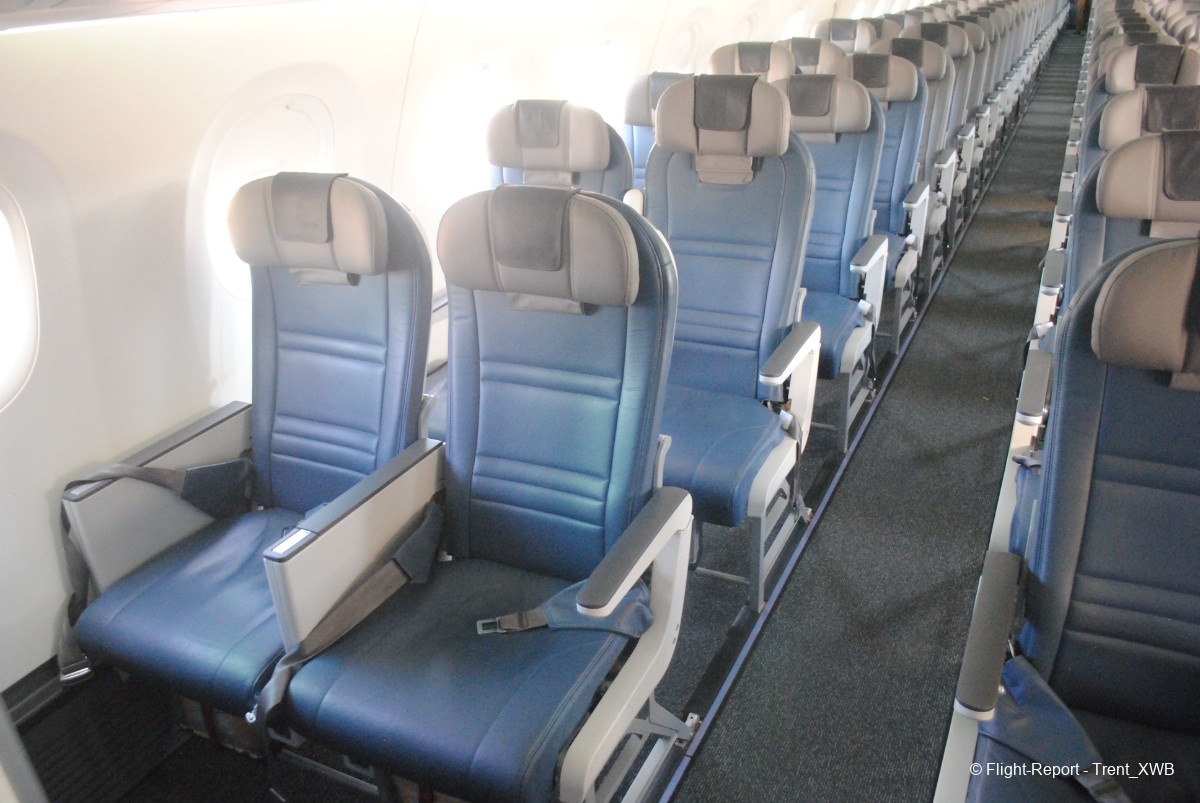
Considering the delay in YYC, the overall time spent onboard this E295 was almost 5.5 hours and it went like an eyeblink due to comfortable laterally spacious cabin and good service.
With the comparable prices, Porter definitely beats down bare-bones Canadian 737-lowcosters like Flair and, probably, WestJet.
Ottawa International Airport (YOW)
YOW is located relatively close to Ottawa and is well-connected by bus service with LRT Hurdman Station. YOW has single terminal, which is quite modern and spacious, serving mostly domestic operations. Among very few international operations stands out AF flight from CDG: in 2023 AF started this service with their old A332s, but in 2024 it was upgauged to A359. After the landing on PD E295 in YOW, I saw an AF A359 being prepared for the return flight to CDG.
Thank you for your attention and see you in the next FRs!
